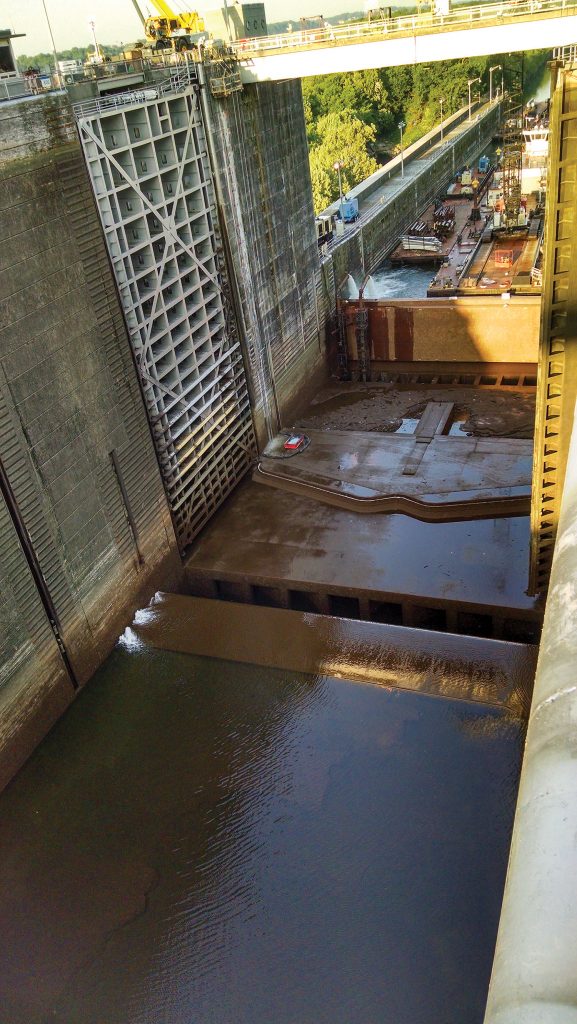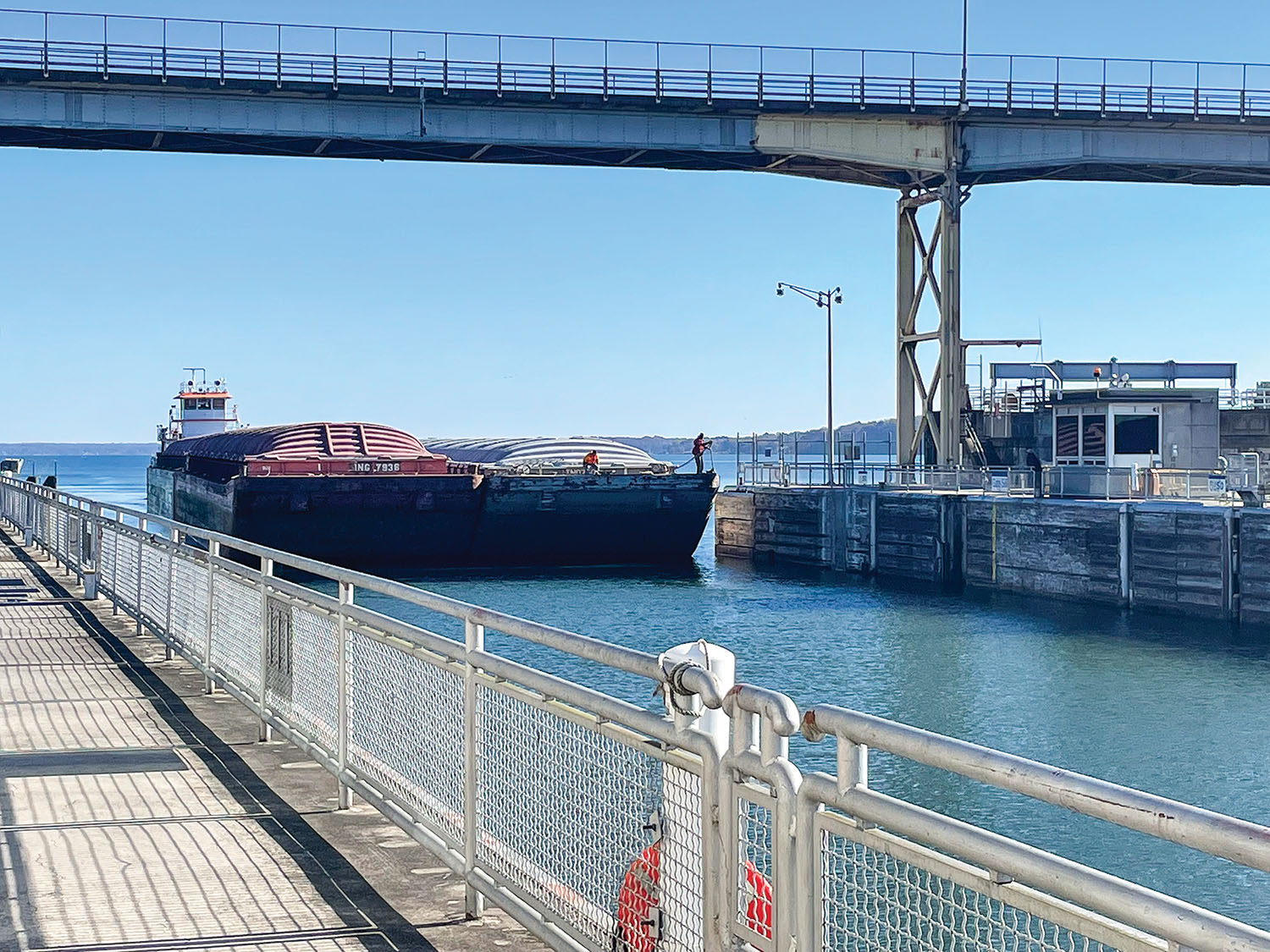Extensive work, including dewatering the main chamber, is scheduled to begin February 23 at Wilson Lock and Dam on the Tennessee River after about two years of planning.
The closure is scheduled for 6 a.m. February 23. The chamber will temporarily open at 6 a.m. March 18 to aid in clearing the queue but will close again on March 24 through April 29, said Meagan Simpson, maintenance section chief for the Nashville Engineer District.
Wilson’s auxiliary chambers will be in operation throughout the closure. Because of the high lift at Wilson, it takes two chambers to complete the locking process, and each auxiliary chamber can hold only one barge at a time.
“So it takes significantly more time to lock through the auxiliary than it does the main,” Simpson said.
The work could be particularly impactful for navigation traffic headed to or from major nearby cities, including Decatur, Guntersville and Chattanooga. Wilson Lock and Dam is located at Mile 259.4 of the Tennessee River, at Florence, Ala.
The mid-work reopening is a result of working with the navigation industry to mitigate the expected delays.
“We’ve met with them multiple times on the schedule to see what we can do to minimize impacts to navigation,” Simpson said.

Additionally, it is a response to restrictions already in place at the lock and dam after an upper floating guard wall detached from lock monoliths and sank to the bottom of the reservoir August 31 as rain and wind from the former Hurricane Ida moved inland.
The main lock chamber was closed until September 2 because of the sinking. The approach wall remains at the bottom of the river. Restrictions include a minimum vessel horsepower of 300 hp., no locking empty tows when winds are 20 mph. or higher, use of a helper boat and downbound traffic only during daylight hours and under good visibility.
Simpson said that the work this year was already scheduled and will not address retrieval of the sunken approach wall, so she expects the restrictions to remain in place once the chamber reopens in April.
Extensive work is planned during the rehab, including the first dewatering of the chamber since summer 2015.
“During this time they are going to be dewatering the upper lift gate and replacing some seals and doing some routine repairs on the upper gate,” Simpson said. “The main piece of this, which will be during the second half of this work, is when we’ll do the full chamber dewatering to dewater the lower gates. We’ll be doing some weld repairs and some other components on the valves as well as taking advantage of the dewatering and doing some inspections.”
While technology helps the Corps with maintenance and repairs, there is no substitution for dewatering the chamber and taking a look, she said. “Being able to look at things under the waterline, it provides so much information,” she said.
She said the inspection will also help the Corps to determine any work that may be required in the future to keep the lock and dam in good condition.
Caption for top photo: A tow approaches the main chamber at Wilson Lock and Dam in November 2021. (Photo courtesy of Nashville Engineer District)




